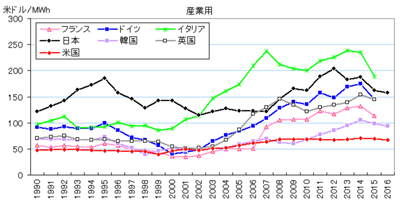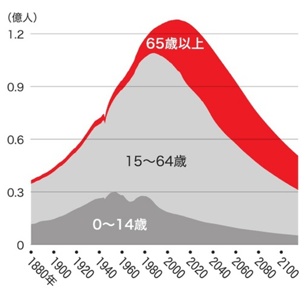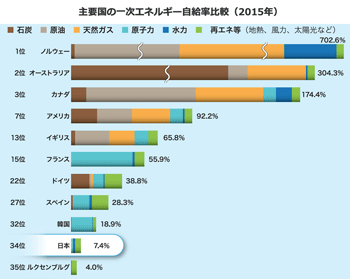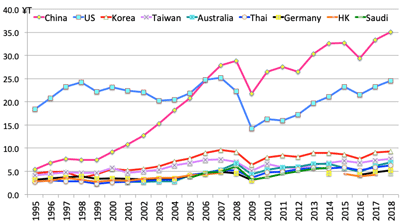>Top 6. Japanese Infrastructure Industry:
- Japanese industry as the infrastructure for east Asian companies:
- vicinity of east Asian countries shortens economic distance between industries.
- engineers can frequently visit each other on every weekend; such as designing and prototyping in Japan, and manufacturing in Asian consuming countries.
- Export to Korea; of intermediate goods, material, and equipment machine:
- Japanese trade surplus with Korea was ¥1T in 2000, and ¥3T in 2010. Korean economy has grown average 4% per annum during this period.
- Export to China unique materials:
- Japan exported 244 tons of iron scrap to China, which will be an important material used in electric furnace; which counts 36% China imports.
- Similarly, Japan had imported iron scrap from US long time after the end of WWII.
- Japan exported 336 tons of used paper to China, which counts 20% China imports. China has insufficient forest resources for making pulp.
- Such materials are rather heavy; vicinity of trade partners is essentially important.
- Japanese industry as technical supplier:
- Designing and prototyping in Japan, then local production for local demand.
- Type of technical supply:
- export of technology embedded in parts or machines.
- supply of technology as intellectual property, and support of technical transfer.
- various derived demand related technical transfer; demand for related material, intermediate goods, parts, machines, equipment as well as maintenance & services including technical advisor and training.
- Japan has induced various social infrastructure, particularly from US after the end of WWII.
- Major supplier of social infrastructure: GE, Siemens, Alstom (Fr, railway), Toshiba, Hitachi, MHI, KHI, Bombardier, Veolia (Fr, water supply).
- Ecosystem of financial center, and silicon valley.
- Such social infrastructure suppliers become global suppliers after fulfilment of domestic demand
- Challenges to overcome:
- Cost competitiveness:
- Monopoly constitution and covoy system of Japanese large corporations.
- Dependence on the government
- Over specification: optimized to domestic standards:
- Severe internal quality assurance
- Engineers' mindset to pursue latest technology
- Slow decision and less global challenge spirit:
- Binding from Japanese infrastructure monopolies (power utility, telecom, and railway)
- most of technical development has been promoted collaborating with these monopolized companies. (e.g.: SIM lock by mobile companies)
- Insufficent global experinece and communication.
|
6.
インフラ産業の日本:
- [*Comment]
- Power utility, Telecom company, and Railway company are semi-monopolized industry, which used to be public corporation.
- Power utility companies are regional monopoly even now.
- NTT was public corporation, and used to be Ministry of Communications until 1985.
- JR companies were Japan National Railway (JNR) until 1987.
- Japan challenges to export these social infrastructure, but not very successful, probably because they tried to export as an integral succeeded one package with higher cost, which would encounter different conditions of emerging countries.
|
|



